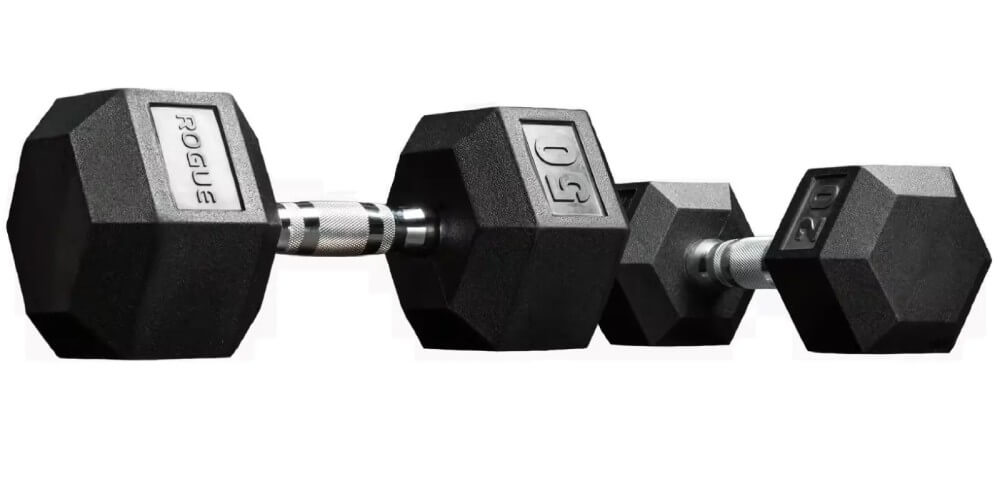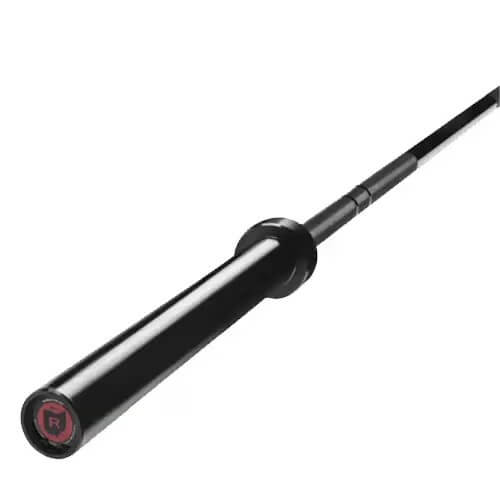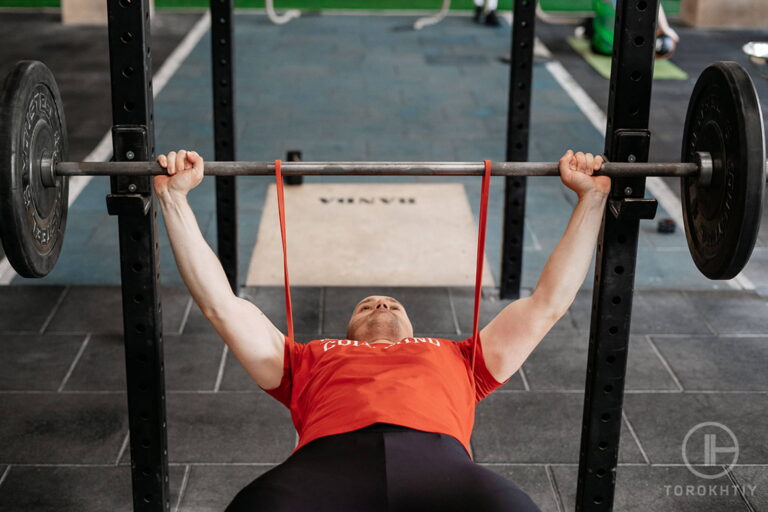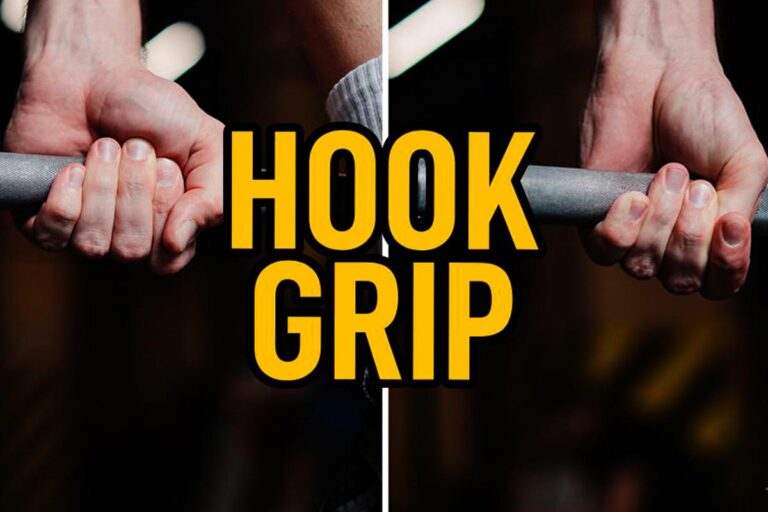Dumbbells vs Barbells: Which Tool Is More Effective?
Resistance training is a proven strength-building formula. Multiple studies have shown that free-weights are more effective than other tools and techniques. In fact, the conundrum hits once you enter the weight room: dumbbells vs barbells.
Despite the gadget boom featuring ankle weights, sandbells, and monkeyfeet – the two weight training classics are unbeatable. But which comes at the top?
Which are better dumbbells or barbells? Barbells take an unassailable lead in progressive overload and mechanical tension, translating into continued muscle development. Dumbbells have unique benefits owing to their extended range of motion and unilateral training mode. Your circumstances will dictate choices.
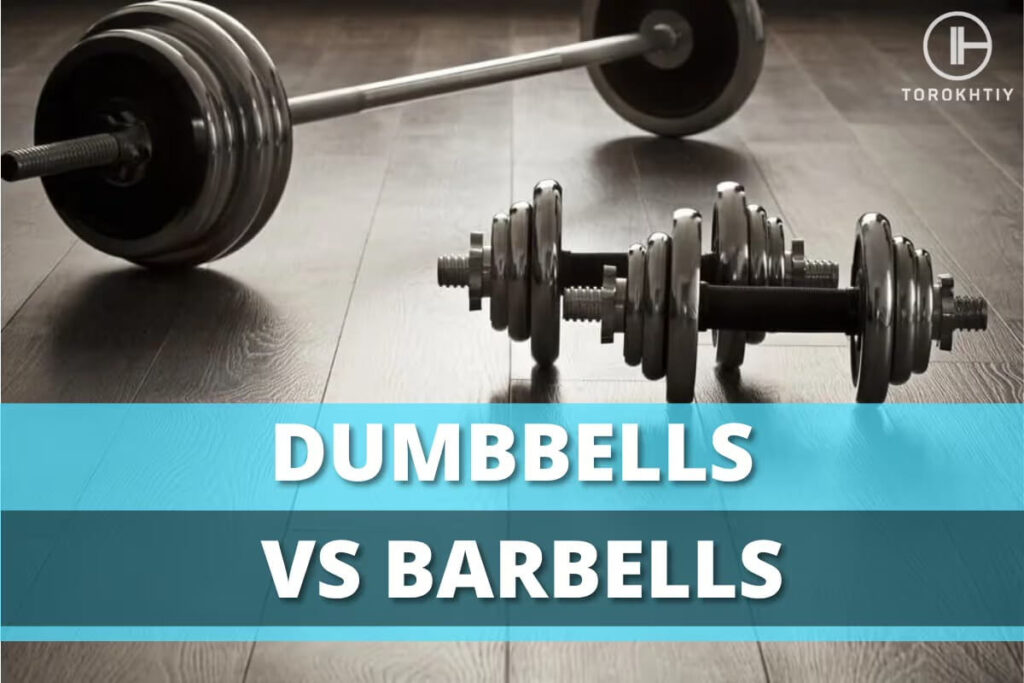
What Is A Dumbbell?
Dumbbells are integral to any fitness space, from big box gyms to small garage setups. They have a short and narrow handle sandwiched between two heavy discs. You hold a dumbbell in one hand either to use individually or in a pair. It can range between 2 to 100 lbs each.
Dumbbells can be fixed, locked with rubber-encased metal plates. Others are made adjustable that allow you to fit more or less plates on both sides. Then, we have advanced selectors like PowerBlocks, having a pin-locked or dial-assisted mechanical design to regulate increments of the block.
What Is A Barbell?
Suffice it to say that a barbell is a strength athlete’s first love. You guessed it right – the clunky crowd of metal bars resting over walls and racks or, mostly, shoulders and chests! You’ll need some weight plates. A bench will also come in handy. Voila! A lot of explosive and complex movements await you.
Barbells are of multiple types, ranging up to 7 feet in length and 45 lb weight. International organizations, such as IWF and IPF, mandate the specifications. Regardless, every barbell packs a long shaft, strategically cross-hatched for the grip and flanked by shiny sleeves to log plates and collars.
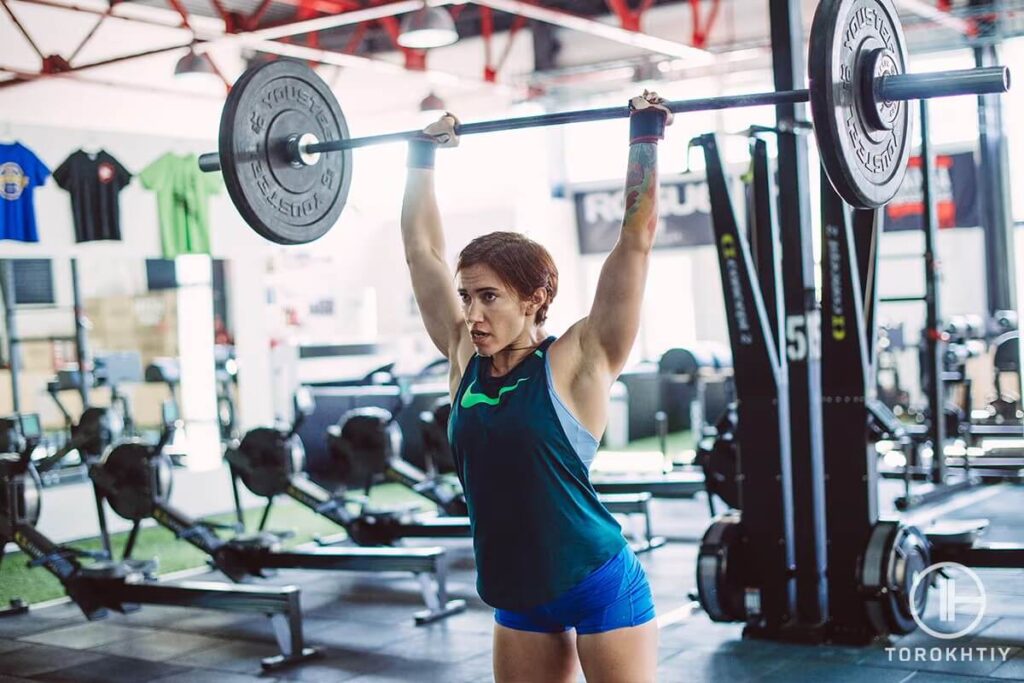
Dumbbells Vs Barbells: Differences
Since both implements serve the same training modality, the main difference between barbell and dumbbell boils down to the magnitude of impacts. When we compare safety, ease of use, muscle growth, and so on – one of them might finish ahead but not without a contest.
1. Progressive Overload
Progressive overload is a strength training mantra that gradually jacks up workout intensity. Your muscles get used to a particular load. The SAID principle (Specific Adaptation to Imposed Demand) also states that changes are specific to stressed body parts and intensity levels.
In order to continue the muscle growth, you must increase the load or rounds. Progressing with either load or reps produces similar increases in muscle size to an extent.
Remember that barbells seamlessly allow both types of progressions. Standard bars have 16” sleeves, accommodating over four bumpers and twice as many iron plates apiece.
Dumbbells have a greater restriction in comparison. You’re lucky if you find a 100 lb bell lying around and even luckier if you could curl that! At some point in time, you’ll hit the plateau.
This 2019 paper suggests that hypertrophy is a combined result of mechanical tension and metabolic stress. Going with weight increments, as in heavy compound moves and 1RM attempts, maximize these variables more efficiently.

2. Muscle Activation
Barbells indeed have the upper hand when it comes to heavy lifting, which underpins muscle growth. The research, investigating the muscle activation patterns during bench and overhead presses, found dumbbell loads at 85% of barbells. Meanwhile, you can generally press 15% more weight with barbells vs dumbbells.
If you take equal weights off the rack, what would happen in that case? A dumbbell press elicits higher activity in pectoral and bicep muscles with less triceps engagement. The extended range of motion (ROM) is the culprit. Imagine benching with a barbell. You must halt once the shaft contacts your chest. Conversely, dumbbells aren’t connected. They grant freedom to travel across all planes and ranges of motion. Your elbows can sink deeper, thoroughly shredding muscle fibers.
ACE Fitness pronounced the best deltoid exercises. Dumbbell presses and front raises climbed to the top, beating upright barbell rows. Therefore, we can claim that dumbbells are more suitable for shoulder and chest exercises as long as you don’t face the progression challenge.
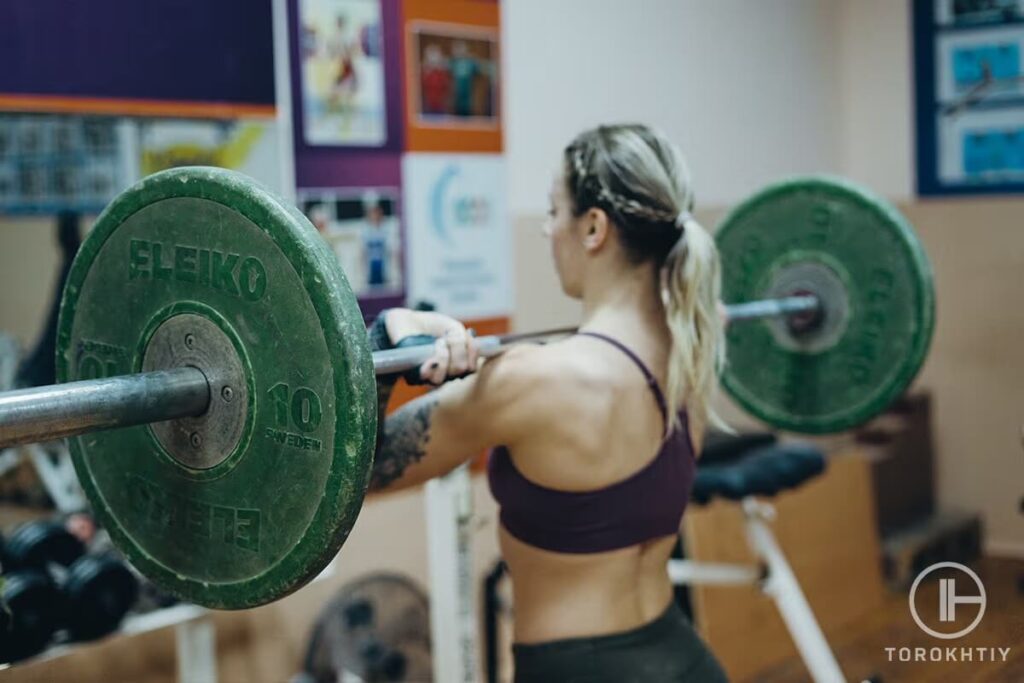
3. Stabilization And Safety
Note that there is a trade-off between stabilization and ROM. In weightlifting, stability is another name for balance. The more stable you are, the more power output you can generate. That’s why an athlete who can bench 300 lbs max may not swing a couple of 150 lb dumbbells.
The design of a barbell requires less work by small stabilizer muscles. The bulk of the responsibility falls upon prime movers like quads, glutes, and lats. The relative freedom with dumbbell variations comes with trickier stabilization. You can supinate your wrists outward, perform a close-grip bench press, or increase horizontal adduction. Your body finds a more natural path. These modifications are impossible while maneuvering a straight bar.
Allen Hedrick, while talking about the practical benefits of dumbbell training, writes in his book: it is “safer than barbells when performing certain exercises, such as single-leg squats or lateral box crossovers because dumbbells are easier to drop safely… [it’s also] easier for people with injuries to continue to train without aggravating the injury site.”
4. Muscle Imbalances
Muscle imbalances aren’t a concept unheard of. People have one arm or leg weaker than the other. It’s mostly the non-dominant one you subconsciously avoid when taking the first step or pitching a baseball.
Shoulder imbalances have been frequently noticed in ballplayers and swimmers. Similarly, the excessive lunge motion elite fencers go through promotes disproportions among limbs. These muscular imbalances may rack up in the shape of overuse and other injuries.
Barbells – with all their standouts and superlatives – fail to factor in these strength gaps. Are dumbbells better than barbells? Sure, they are! The freedom of movement that comes with a dumbbell makes it appropriate for isolation (single-joint) exercises.
It’s known that unilateral training strengthens underused muscles. You can tone and tighten body parts to even out muscular development. Furthermore, spotting the lags and discrepancy is easier when doing certain exercises.
Single-leg Romanian deadlifts, one-arm presses, and Bulgarian split squats are a few to name. Otherwise, barbells automatically summon your dominant side to compensate (not correct) imbalances. Hence, dumbbells should never be sidelined for good.

5. Workout Efficiency
Barbell training carries absolute upsides for your career should you take it up professionally. No one will ask your dumbbell PRs. Weightlifting, powerlifting, bodybuilding, fitness, and strongman competitions are sports disciplines that rely on barbells.
For example, Olympic weightlifting consists of two movements: the snatch and the clean-and-jerk. Powerlifting channels your inner raw power into a triplet of maximal lifts codenamed ‘Big 3’: squats, deadlifts, and bench presses.
Dumbbells are incredibly versatile. You don’t waste time loading plates, clamping collars, or setting rigs. Several dumbbell-oriented exercises are unique. Think of farmer’s walk and Russian twists. Accessory work improves the performance of primary lifts. You can execute them with a barbell or dumbbells or any other means.
Nonetheless, you must lean toward barbells in your workout regime as you build up strength and skills. If not, how would you crush that first lifting meet? Another tick for a bar’s supremacy is its relatively full-body activation. The major movements you do are compound.
They diverge from isolation exercises due to the large-scale involvement of muscle groups. Unless you have a rehab interest, barbells mark efficient training volume given the timeframe. Still, a mix of single and multi-joint resistance programs can be pursued.

6. Purchasing Prerequisites
If you can spare a whole basement and thousands of bucks in quest of your new-found love for weights, kudos to you! Most of us don’t have that level of commitment, especially when starting out.
Dumbbells are stand-alone fitness equipment. Bring a set home and crush those planned workouts. No need to worry about space either, as they’ll quietly sneak under the bed.
If you’re wondering should you get your hands on a dumbbell or barbell for beginners, the former makes more sense up to a level. Everything said – the majority of your meaningful experiences will come underneath a loaded bar.
As Mark Rippetoe puts it in Starting Strength: “Properly performed full-range-of-motion barbell exercises are essentially the functional expression of human skeletal and muscular anatomy under a load.”
A good piece that packs high-tensile steel, a rust-free coat, and long-lasting grip and spin will cost north of three figures. You’ll have to stock up on multiple plates as well as a power rack, lifting belt, and an adjustable bench going forward.
Although it’d pay off extraordinary ROI in the long run, you shouldn’t necessarily dive headfirst when testing the waters.
Dumbbells Vs Barbells: Summary
As it’s apparent by now, declaring a winner is impossible. The answer to the barbells vs dumbbells debate is quite personal. Your fitness level and goals will determine the optimal choice.
Floor and financial constraints also have a say. However, barbells take the lead in value for money as you steadily progress. A bar with a stake of a dozen plates is easier to manage, on any day, than infinite rows of dumbbells. The case is not the same through those early baby steps.
Barbells are the uncrowned king of strength training. If you plan to continue making serious gains and personal bests, there is no other option. Also, the self-assuring feel of picking your bulkiest load off the ground is unparalleled.
The one-hand build of dumbbells permits multi-directional moves instead of locking you in a sagittal plane. The heightened spatial awareness, mobility, and ROM deliver some distinctive benefits for activating and balancing muscles.
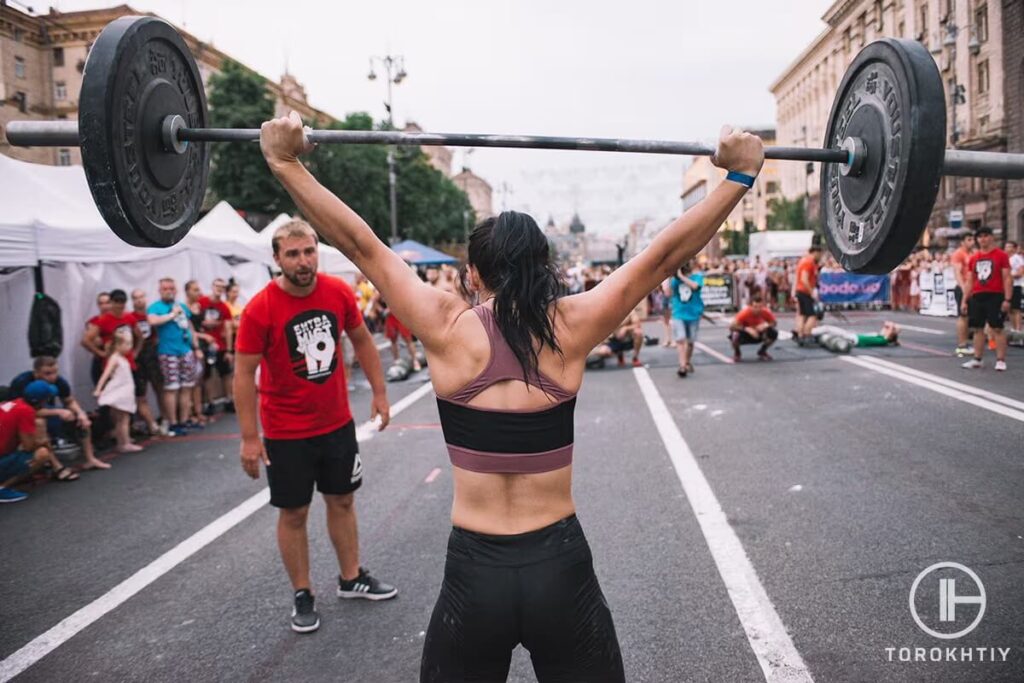
Pros And Cons Of Barbells
Positives:
Could be better:
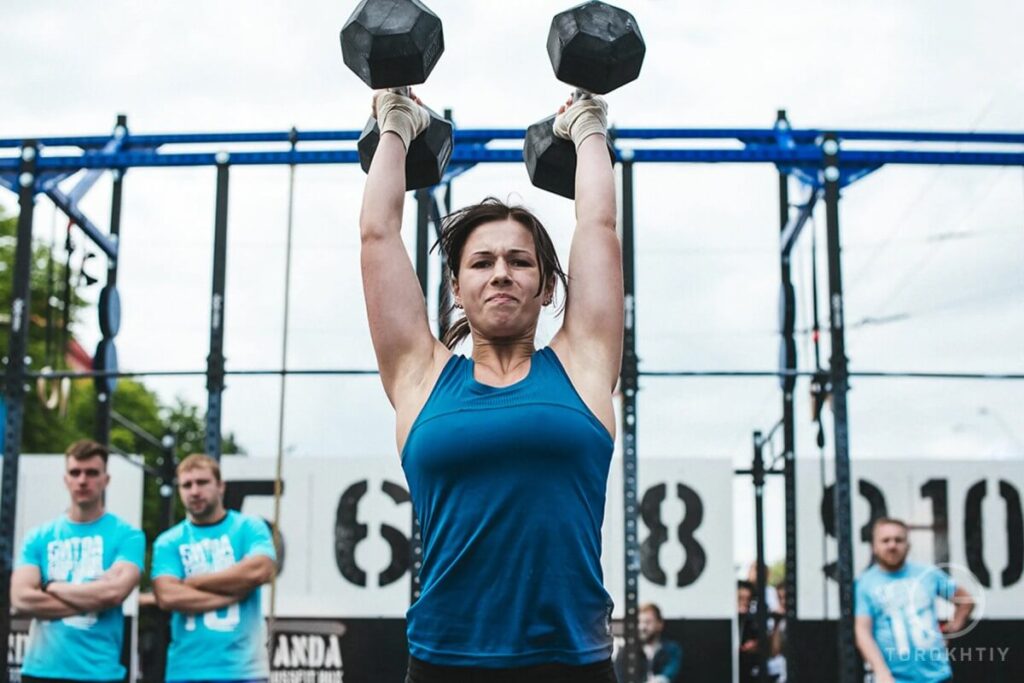
Pros And Cons Of Barbells
Positives:
Could be better:
Dumbbells Vs Barbells: Differences
Having discussed the pros/cons of titanic strength training tools, let’s see what purposes and situations you should put them to use. Make no mistake – you can lift either a barbell or dumbbell for bulking up lean muscles, power output, and metabolic stress.
Dumbbells are a preferable mode of training in the following cases:
- Isometric and endurance training
- Accessory work to assist ‘Big 3’
- Physical therapy (expert advice required)
- Amateur to the strength game
A barbell plus plates combo is a better option in these situations:
- Maximizing muscle growth
- Compound, explosive, and full-body movements
- Maximal lifts (1RM, 3RM, etc.)
- Training for sports and competitions
Tips From the Champ
Try to incorporate both dumbbell and barbell exercises in your strength training plan. Reserve barbell complex for compound movements like deadlifts, squats, bench presses, and overhead presses. Keep the load moderate-to-high. Then, slip dumbbells – as in tricep kickbacks, lateral raises, and incline flys – with a slightly greater rep range.
Olympic Weightlifting Champion
If you’re new to weights, it’s okay to stick with hex heads for a while. When to switch from dumbbell to barbell? After a few weeks of dumbbell training, you’ll be ready for the transition. There is a learning curve for figuring out bar path, placement (back vs front squat), and grip (hooks vs neutral).
In any case, don’t forget to warm up sufficiently before taking up weights. Recent research has disclosed that specific warm-ups with 40%-80% training load optimize performance. Remember, a properly-executed lift of lower intensity is more advantageous than lifting big with poor form.

Differences Between Working Out With Dumbbells And With Barbells
Dumbbells are miniature barbells, although, ironically, they are much older. The change in size and substance leads to differences in the feeling and functionality of your workout.
1. Unilateral Vs Bilateral Training
It refers to whether one or both sides of the body are engaged. Barbells are far too long for single-joint, one-sided exercises. Dumbbells can be used interchangeably. Experts recommend using unilateral and bilateral movements in conjunction to reap specificity and strength.
2. Injury Risks
Soft-tissue injuries are prevalent in weightlifting. Wrists, shoulders, hips, back, ankles, and knees are commonly hurt. Improper technique, overuse, and bar collisions are driving factors. Dumbbells pose fewer biomechanical interventions. Still, rest and recovery guidelines should be followed.
3. Mobility And Control
Muscle co-activation is a phenomenon that comprises agonist-antagonist muscles in opposite directions, stabilizing and securing joints. For example, the bicep is an agonist while relaxing triceps are antagonists during curls. Dumbbells challenge this mechanism, thus limiting the weight you can move.
Dumbbells We Recommend
These Rogue Dumbbells are our favorites to pump up for contests. They feature hex-shaped proprietary heads, undoubted durability, and high-quality construction. They are non-adjustable, available in 2.5 lb to whopping 125 lb pairs.

The moderately-knurled, chrome-plated handle provides an ergonomic twist into this timeless design. Its center is bulged out, facilitating multiple grip styles and exercise varieties. Hexagonal bells stay grounded and don’t roll around.
Additionally, the rubber coating ensures safety for tools and flooring. Rogue is a reliable outlet to shop for made-in-USA fitness equipment.
Barbell We Recommend
The legendary Ohio bar is Rogue’s best-selling, multi-purpose barbell. It has dual knurl marks for Oly and power lifts. The center spacing looks after your peaceful pin presses and back squats.
The overall length of the bar is 86.75″ with 16.40″ sleeves. The shaft’s diameter also strikes a balance at 28.5mm. Bronze bushings deliver consistent spin and whip, suitable for snatches as well as squats.

Made with 190K PSI super-strong steel, you’ll get a lifetime warranty. The surface finishes include bare, zinc-coated, and stainless types. New customizable cerakote bars can match your setup pretty well.
FAQ
Why Can I Lift More With Dumbbells Than Barbells?
It’s strange in normal conditions. First, make sure you’re counting the barbell, as it may weigh as much as 45 lb alone. If your max dumbbell lift is still heavier, your body might be taking a different natural path that the bar’s fixed axis can’t accommodate.
Lastly, the gist of the SAID principle dictates that you’re better at what you do. So perhaps, you’re new to barbell training and on your way to excellence.
Can You Use Dumbbells Instead Of Barbells?
Sure, you can use dumbbells for most exercises that take a barbell. We can’t say the same the other way around. If your goal is to maximize strength and growth of muscles, barbells are a compulsory and rewarding tool.
Are Dumbbells Harder Than Barbells?
Dumbbells can be more challenging because each arm has to maintain its own balance. That’s the reason most run-of-the-mill gym junkies can’t lift the same as with barbells. However, restricted stabilization gives way to greater ROM. You can contract and isolate specific muscles.
Conclusion
For the dumbbells vs barbells scenario, the best way is to see both strength training titans in a conjunction instead of competition. Barbell allows you to explode strength and power. At the same time, dumbbell exercises are able to circumvent muscle imbalances, specific injuries, and beginners’ intimidation. The optimal choice comes down to individual reasons and goals.
So, what was your first weight room experience? Share your strength training routine with fellow champs. Any queries and suggestions are also welcomed.
Also read:
- Best Budget Barbells
- How Much Does A Barbell Cost
- Olympic vs Standard Barbell
- Best Trap Bar
- How Much Does A Barbell Weigh
- Types Of Barbells
- Best Safety Squat Bar
- Best Home Gym Pull up Bar
References:
- Prieto-González, P. & Sedlacek, J. (2021). Comparison of the Efficacy of Three Types of Strength Training: Body, Weight Training Machines and Free Weights. Apunts Educación Física y Deportes, 145, 9-16.
- Daniel Plotkin et al., Progressive overload without progressing load? The effects of load or repetition progression on muscular adaptations, PeerJ. 2022 Sep; 10: e14142.
- Michal Krzysztofik et al., Maximizing Muscle Hypertrophy: A Systematic Review of Advanced Resistance Training Techniques and Methods, Int J Environ Res Public Health. 2019 Dec; 16(24): 4897.
- James M. Kohler et al., Muscle Activation Patterns While Lifting Stable and Unstable Loads on Stable and Unstable Surfaces, Journal of Strength and Conditioning Research 24(2):p 313-321, February 2010.
- Déborah de Araújo Farias et al., Maximal Strength Performance and Muscle Activation for the Bench Press and Triceps Extension Exercises Adopting Dumbbell, Barbell, and Machine Modalities Over Multiple Sets, J Strength Cond Res. 2017 Jul;31(7):1879-1887.
- Samantha Sweeny, Dynamite Delts: ACE Research Identifies Top Shoulder Exercises, ACE Fitness https://www.acefitness.org/continuing-education/prosource/research-special-issue-2015/5320/dynamite-delts-ace-research-identifies-top-shoulder-exercises/ (accessed on 2023 Aug 18)
- Allen Hedrick, Dumbbell Training, (Human Kinematics, 2014) : 4-5
- Phil Page, SHOULDER MUSCLE IMBALANCE AND SUBACROMIAL IMPINGEMENT SYNDROME IN OVERHEAD ATHLETES, Int J Sports Phys Ther. 2011 Mar; 6(1): 51–58.
- Taewhah Kim et al., Effects of specific muscle imbalance improvement training on the balance ability in elite fencers, J Phys Ther Sci. 2015 May; 27(5): 1589–1592.
- EC Costa et al., Effect of unilateral and bilateral resistance exercise on maximal voluntary strength, total volume of load lifted, and perceptual and metabolic responses, Biol Sport. 2015 Mar; 32(1): 35–40.
- Hayden J. Pritchard et al., Relationships between 1RM powerlifting competition lifts and common modified and accessory exercises used in training – a pilot study, Conference: 2016 ASCA International Conference on Applied Strength and Conditioning.
- Mark Rippetoe, Starting Strength: Basic Barbell Training, 3rd edition (The Aasgaard Company, 2011): 7
- Bruno Ribeiro et al., The Role of Specific Warm-up during Bench Press and Squat Exercises: A Novel Approach, Int J Environ Res Public Health. 2020 Sep; 17(18): 6882.
- Charles J. Fountaine, UNILATERAL AND BILATERAL EXERCISE MOVEMENTS Considerations for Program Design, ACSM’s Health & Fitness Journal 22(3):p 11-16, May/June 2018.
- Allen Hedrick and Hiroaki Wada, Weightlifting Movements: Do the Benefits Outweigh the Risks?, Strength and Conditioning Journal 30(6):p 26-35, December 2008.
- Andrei V. Gorkovenko et al., Muscle agonist–antagonist interactions in an experimental joint model, Exp Brain Res. 2012; 222(4): 399–414.
Why Trust Us?
With over 20 years in Olympic Weightlifting, our team does its best to provide the audience with ultimate support and meet the needs and requirements of advanced athletes and professional lifters, as well as people who strive to open new opportunities and develop their physical capabilities with us.
By trusting the recommendations of our certified experts in coaching, nutrition, dietology, and sports training programming, as well as scientific consultants, and physiotherapists, we provide you with thorough, well-considered, and scientifically proven content. All the information given in the articles concerning workout programming, separate exercises, and athletic performance, in general, is based on verified data. We ensure that you can rely on our professionals’ pieces of advice and recommendations that can be treated as personalized ones which will benefit you and fully meet your needs.
The product testing process is described in more detail here
Author: Ihor Shymechko
Pro Olympic Weightlifter, Coach
Best Results: Snatch – 208 kg,
C&J – 240 kg
Ihor has been a professional weightlifter since 1996, boasting over two decades of competition experience. His notable achievements include clinching the European Championship in 2009 and securing a silver medal in the 105kg division at the Senior World Championships in 2011. Ihor represented his country in the 2008, 2012, and 2016 Summer Olympics. After retiring from competitive weightlifting, he transitioned to coaching, leveraging his vast experience to guide athletes who now compete on both national and international stages.


